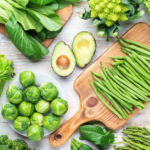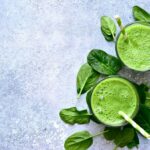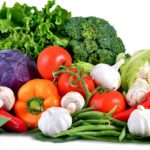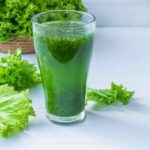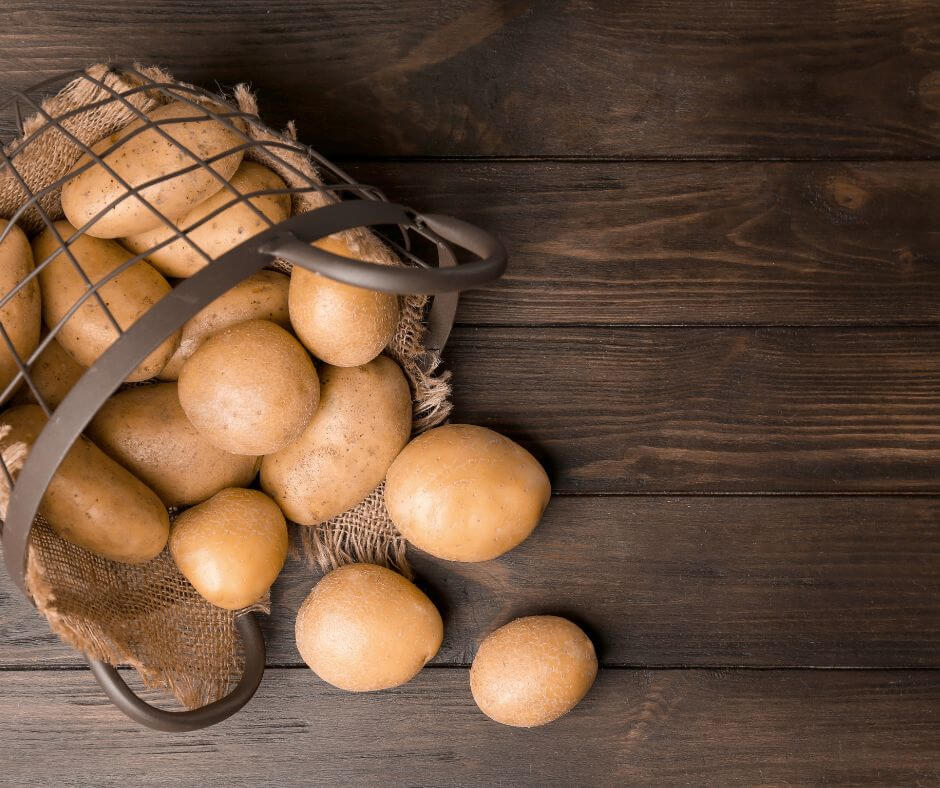If you’re looking vegetable with most fiber In this blog post, we’ll dive deep into the world of fiber. So if you’re ready to supercharge your fiber intake and improve your health, keep reading to discover the vegetable with the most fiber.
What is Fiber?

Fiber, also known as dietary fiber or roughage, is a type of carbohydrate that cannot be digested by the human body. Unlike other carbohydrates, fiber passes through the digestive system relatively intact, without being broken down into simple sugars.
Soluble fiber dissolves in water and forms a gel-like substance in the digestive tract, while insoluble fiber does not dissolve in water and passes through the digestive system largely intact.
Fiber plays an important role in maintaining digestive health and preventing a variety of chronic diseases. It helps regulate bowel movements, prevents constipation, lowers cholesterol levels, and may even reduce the risk of certain types of cancer.
Vegetable with most fiber benefits
Promoting regular bowel movements:
Promoting regular bowel movements: Fiber helps add bulk to stool, making it easier to pass and reducing the likelihood of constipation.
Lowering cholesterol levels:
Soluble fiber binds to cholesterol in the digestive tract and helps remove it from the body, which can help lower blood cholesterol levels.
Regulating blood sugar levels:
Soluble fiber slows down the absorption of glucose in the bloodstream, which can help regulate blood sugar levels.
Supporting weight management:
High-fiber foods are typically low in calories and can help you feel full for longer periods of time, which can reduce overall calorie intake and support weight management.
Improving heart health:
Fiber is associated with a reduced risk of heart disease, in part because it can help lower blood pressure and cholesterol levels.
Reducing the risk of certain cancers:
A high-fiber diet is associated with a reduced risk of colorectal cancer and other types of cancer, possibly due to its ability to promote regular bowel movements and reduce inflammation in the body.
Recommended Daily Fiber Intake
The recommended daily fiber intake varies based on age and gender. According to the Academy of Nutrition and Dietetics, the following are the recommended daily fiber intake guidelines:
Children (ages 1-3): 19 grams
Children (ages 4-8): 25 grams
Girls (ages 9-18): 26 grams
Boys (ages 9-18): 31 grams
Women (ages 19-50): 25 grams
Women (ages 51 and older): 21 grams
Men (ages 19-50): 38 grams
Men (ages 51 and older): 30 grams
It’s important to note that these are general guidelines and individual fiber needs may vary based on factors such as activity level, health status, and personal preferences.
35 Vegetable with most Fiber
Here is a chart with 35 vegetables and their respective fiber content:
| Vegetable | Fiber content (per 100g) |
|---|---|
| Artichoke | 5.4g |
| Asparagus | 2.1g |
| Beetroot | 2.8g |
| Bell peppers | 1.7g |
| Broccoli | 2.6g |
| Brussels sprouts | 3.8g |
| Cabbage | 2.5g |
| Carrots | 2.8g |
| Cauliflower | 2.3g |
| Celery | 1.6g |
| Collard greens | 4g |
| Cucumber | 0.5g |
| Eggplant | 3g |
| Green beans | 3.4g |
| Kale | 2g |
| Leeks | 1.8g |
| Lentils | 7.9g |
| Lima beans | 7g |
| Okra | 3.2g |
| Onions | 1.7g |
| Peas | 5.5g |
| Potatoes | 2.5g |
| Pumpkin | 1g |
| Radish | 1.6g |
| Spinach | 2.2g |
| Squash | 1.5g |
| Sweet potato | 3g |
| Swiss chard | 1.6g |
| Tomatoes | 1.2g |
| Turnip greens | 3.2g |
| Watercress | 0.5g |
| Wax beans | 3.3g |
| Winter squash | 1.5g |
| Zucchini | 1g |
Artichoke

Artichoke is a vegetable that is high in fiber, with around 5.4 grams of fiber per 100 grams of raw artichoke. Artichokes are also a good source of antioxidants, vitamins, and minerals, making them a nutritious addition to any diet.
Asparagus

Asparagus is another high-fiber vegetable, with around 2.1 grams of fiber per 100 grams of raw asparagus. In addition to its fiber content, asparagus is also a good source of vitamins and minerals, including vitamin K, vitamin C, folate, and potassium.
Beetroot

Beetroot, also known as beets, is a root vegetable that is packed with fiber, with around 2.8 grams of fiber per 100 grams of raw beetroot. Beetroot is also a rich source of antioxidants, vitamins, and minerals, making it a great addition to any healthy diet.
Bell peppers

Bell peppers, also known as sweet peppers or capsicums, are another vegetable that is rich in fiber. A medium-sized bell pepper contains around 1.7 grams of fiber, with most of the fiber found in the pepper’s skin and seeds.
Broccoli

Broccoli is a cruciferous vegetable that is well-known for its numerous health benefits, including its high fiber content. With around 2.6 grams of fiber per 100 grams of raw broccoli, it is a great vegetable to include in a high-fiber diet.
Brussels sprouts

Brussels sprouts are another cruciferous vegetable that is high in fiber, with around 3.8 grams of fiber per 100 grams of raw Brussels sprouts. In addition to their fiber content, Brussels sprouts are also rich in vitamins and minerals, including vitamin C, vitamin K, and folate.
Cabbage

Carrots

Carrots are a popular root vegetable that are not only tasty but also a good source of fiber. With around 2.8 grams of fiber per 100 grams of raw carrots, they are a great addition to a high-fiber diet.
Cauliflower

Cauliflower is a cruciferous vegetable that is high in fiber, with around 2.3 grams of fiber per 100 grams of raw cauliflower. In addition to its fiber content, cauliflower is also a good source of vitamins and minerals, including vitamin C, vitamin K, and folate.
Celery

Celery is a low-calorie vegetable that is also high in fiber, with around 1.6 grams of fiber per 100 grams of raw celery. While it may not be the highest fiber vegetable on the list, it still provides a good amount of fiber per serving.
Collard greens

Collard greens are a leafy green vegetable that is particularly high in fiber, with around 4 grams of fiber per 100 grams of raw collard greens. Collard greens are also a great source of vitamins and minerals, including vitamin K, vitamin C, and calcium.
Cucumber

Cucumbers are a refreshing and hydrating vegetable that is also a good source of fiber, with around 0.5 grams of fiber per 100 grams of raw cucumber. While cucumbers may not be the highest fiber vegetable on the list, they still provide a small amount of fiber per serving.
Eggplant

Eggplant, also known as aubergine, is a low-calorie vegetable that is also a good source of fiber, with around 2.5 grams of fiber per 100 grams of raw eggplant. Eggplants are also rich in vitamins and minerals, including vitamin C, vitamin K, and potassium.
Green beans

Green beans, also known as string beans or snap beans, are a type of legume that is particularly high in fiber, with around 3.4 grams of fiber per 100 grams of raw green beans. Green beans are also a great source of vitamins and minerals, including vitamin C, vitamin K, and folate.
Kale

Kale is a leafy green vegetable that is often hailed as a superfood due to its high nutrient density. Kale is also particularly high in fiber, with around 3.6 grams of fiber per 100 grams of raw kale. In addition to its fiber content, kale is a great source of vitamins and minerals, including vitamin C, vitamin K, and calcium.
Leeks

Leeks are a member of the Allium family of vegetables, which also includes onions and garlic. Leeks are particularly high in fiber, with around 1.8 grams of fiber per 100 grams of raw leeks. In addition to their fiber content, leeks are also a great source of vitamins and minerals, including vitamin C, vitamin K, and folate.
Lentils

Lima beans

Lima beans, also known as butter beans, are a type of legume that is particularly high in fiber, with around 7 grams of fiber per 100 grams of cooked lima beans. Lima beans are also a great source of vitamins and minerals, including folate, iron, and potassium.
Okra

Okra is a green, flowering plant that is often used in Southern cooking. Okra is also a good source of fiber, with around 3.2 grams of fiber per 100 grams of raw okra. In addition to its fiber content, okra is also a great source of vitamins and minerals, including vitamin C, vitamin K, and folate.
Onions

Onions are a member of the Allium family of vegetables, which also includes garlic and leeks. Onions are particularly high in fiber, with around 1.7 grams of fiber per 100 grams of raw onions. In addition to their fiber content, onions are also a great source of vitamins and minerals, including vitamin C, vitamin B6, and potassium.
Peas

Peas are a type of legume that are not only a good source of protein but also a great source of fiber, with around 5 grams of fiber per 100 grams of cooked peas. Peas are also rich in vitamins and minerals, including vitamin C, vitamin K, and folate.
Potatoes

Potatoes are starchy root vegetable that are a good source of fiber, with around 2 grams of fiber per 100 grams of raw potatoes. In addition to their fiber content, potatoes are also a good source of vitamins and minerals, including vitamin C, potassium, and vitamin B6.
Pumpkin

Pumpkin is a type of winter squash that is particularly high in fiber, with around 1 gram of fiber per 100 grams of raw pumpkin. In addition to its fiber content, pumpkin is also a great source of vitamins and minerals, including vitamin A, vitamin C, and potassium.
Radish

Radishes are a root vegetable that are particularly high in fiber, with around 1.6 grams of fiber per 100 grams of raw radishes. In addition to their fiber content, radishes are also a good source of vitamin C and potassium.
Spinach

Spinach is a leafy green vegetable that is particularly high in fiber, with around 2.2 grams of fiber per 100 grams of raw spinach. In addition to its fiber content, spinach is also a great source of vitamins and minerals, including vitamin A, vitamin C, and iron.
Squash

Squash is a type of winter vegetable that is high in fiber, with around 1 gram of fiber per 100 grams of raw squash. In addition to its fiber content, squash is also a good source of vitamins and minerals, including vitamin C, potassium, and vitamin A.
Sweet potato

Sweet potatoes are a root vegetable that are particularly high in fiber, with around 2.5 grams of fiber per 100 grams of raw sweet potato. In addition to their fiber content, sweet potatoes are also a great source of vitamins and minerals, including vitamin A, vitamin C, and potassium.
Swiss chard

Swiss chard is a leafy green vegetable that is particularly high in fiber, with around 1.6 grams of fiber per 100 grams of raw Swiss chard. In addition to its fiber content, Swiss chard is also a great source of vitamins and minerals, including vitamin A, vitamin C, and magnesium.
Tomatoes

Tomatoes are a juicy and flavorful fruit that are a good source of fiber, with around 1 gram of fiber per 100 grams of raw tomatoes. In addition to their fiber content, tomatoes are also a great source of vitamins and minerals, including vitamin C, potassium, and lycopene, which is an antioxidant.
Turnip greens

Turnip greens are a leafy green vegetable that are particularly high in fiber, with around 3.2 grams of fiber per 100 grams of raw turnip greens. Turnip greens are a fantastic source of vitamins and minerals, such as calcium, vitamin A, and vitamin C, in addition to fibre.
Watercress

Watercress is a leafy green vegetable that is particularly high in fiber, with around 0.5 grams of fiber per 100 grams of raw watercress. In addition to its fiber content, watercress is also a great source of vitamins and minerals, including vitamin C, vitamin K, and calcium.
Wax beans

Wax beans, also known as yellow beans, are a type of green bean that are particularly high in fiber, with around 3.4 grams of fiber per 100 grams of raw wax beans. In addition to their fiber content, wax beans are also a good source of vitamins and minerals, including vitamin C, vitamin K, and potassium.
Winter squash

Winter squash is a type of squash that is particularly high in fiber, with around 1.5 grams of fiber per 100 grams of raw winter squash. In addition to its fiber content, winter squash is also a great source of vitamins and minerals, including vitamin A, vitamin C, and potassium.
Zucchini

Zucchini is a popular summer squash that is a good source of fiber, with around 1 gram of fiber per 100 grams of raw zucchini. In addition to its fiber content, zucchini is also a great source of vitamins and minerals, including vitamin C, vitamin K, and potassium.
